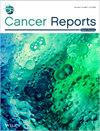The protective effect of vitamin D on ovarian reserve and anti-mullerian hormone in patients undergoing chemotherapy for breast cancer, a randomized phase ΙΙ clinical trial
Abstract
Background
Reduced ovarian reserve is among the crucial long-term side effects of using chemotherapy agents in breast cancer, yielding early ovarian failure. On the other hand, vitamin D is an essential factor in protecting the follicles and an important predictive factor for successful IVF therapy.
Aim
The aim of this study is evaluation of vitamin D as a agent that can reduce fertility complications of chemotherapy specially in young women.
Methods
Breast cancer patients undergoing chemotherapy at two cancer institutes were enrolled in this study. The case group received 1000 IU of calcitriol, and the AMH level was measured at the baseline, after chemotherapy, and six months after chemotherapy. The primary end point was improvement in the AMH level after six months of chemotherapy. the secondary endpoint was to evaluate the predictive factors of AMH level decline during chemotherapy.
Results
Between 2018 and 2019, 18 and 15 patients were enrolled in the case and control groups, respectively. The mean AMH level (ngr/ml) of the patients in the case and control group were 3.16 and 2.37 ng/mL, respectively (p-value = .16). These levels were 0.387 and 0.19 after six months (p-value = .38). The AMH rise immediately after chemotherapy cycles to six months after chemotherapy, in the case and control groups were 0.86 and 0.44 ng/mL, respectively, which was slightly higher in the case group but not statistically significant between two groups (p-value = .054).
Conclusion
Despite a minimal rise in the AMH level after six months of chemotherapy, the study could not demonstrate any protective effect of vitamin D on patients' ovarian reserve undergoing chemotherapy for breast cancer. Further larger studies are needed to evaluate the effect of vitamin D supplements on ovarian reserve beside optimal dose and duration.

 求助内容:
求助内容: 应助结果提醒方式:
应助结果提醒方式:


